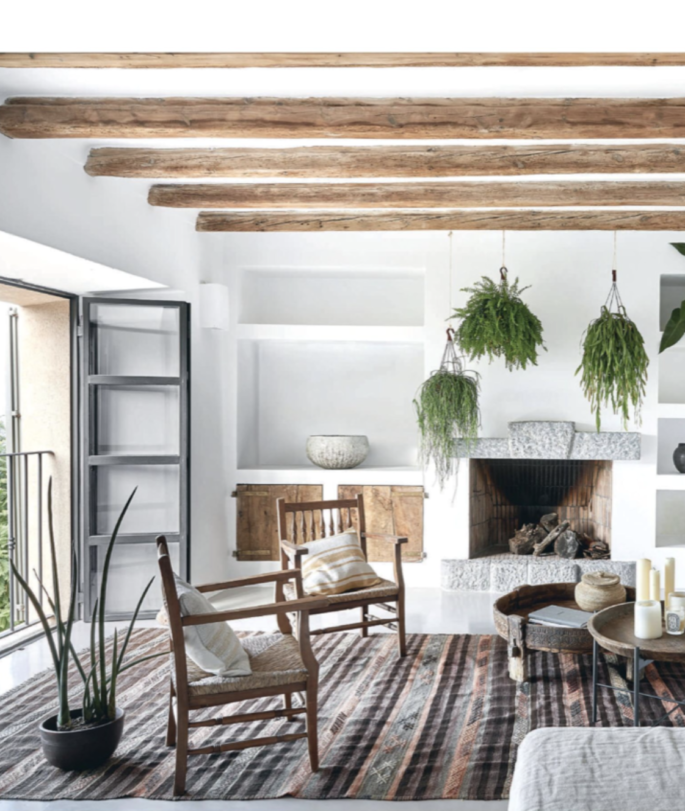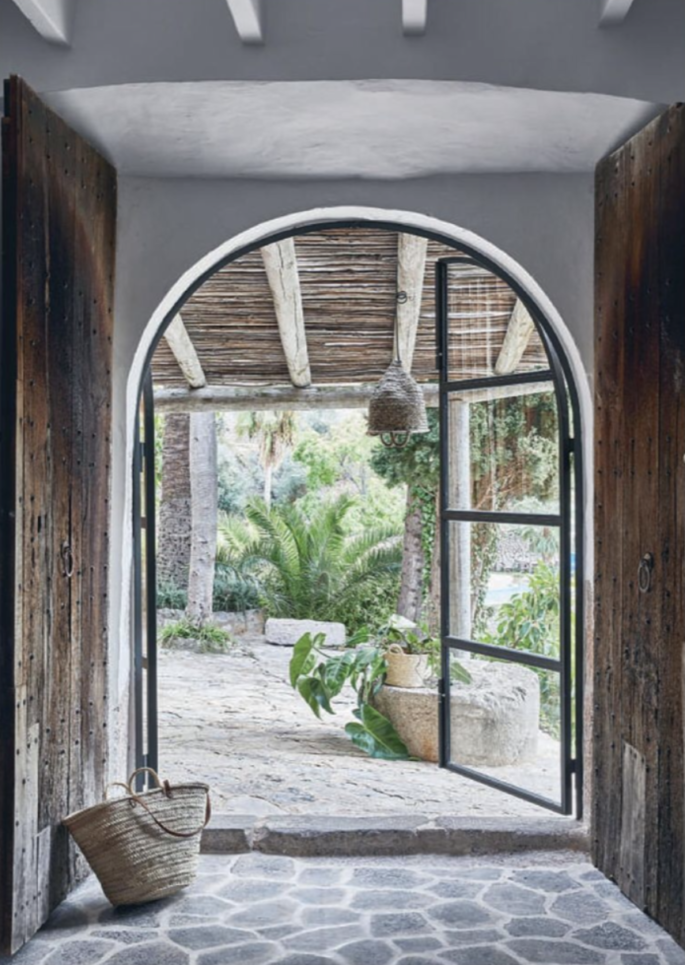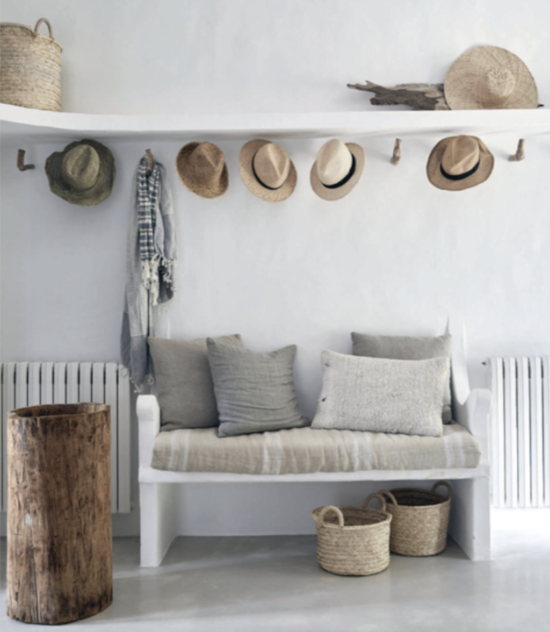We recently read a great story in MyDomaine on how to get your pad decorated in 10 steps which got us thinking how we’d do it…. The secret is spending some additional time, in the beginning, to save money down the road and end up with a much better interior. So plan ahead. But do remember, the best rooms evolve over time – the best never look spanking new. A house that has been decorated overnight says ‘We’ve arrived!’. The aim is to pull things from different ears into one harmonious whole.
Step 1: Get Inspired
The first step to decorating is to know yourself. Are you a minimalist or comfortable with a bit of clutter? What message do you want your house to send to the world? Do you want it to be a bold statement or something more polite and restrained? Go for designs that fit in with your vision of yourself. Decide what you like. To do this, you need to have a plan. Start gathering inspiration with interior images from instagram, pinterest, magazines, and books – seeking out furniture you love, textures, and materials. Group everything into a folder or pinterest board to create a clear vision in one space. Your deliverable: A moodboard filled with your favourite spaces, furniture, colours, materials, and styles.
Step 2: Find the Common Threads
Once you have all your inspiration in one place, find the common elements. You might love Japanese, Morroco and French design, but does a penchant for marble, minimal style and the colour kahki, shine out? Identify these colours, textures, and materials; and use them as your starting point for a design plan. The aim isn’t to go overboard with any of them, but to create a harmonious style for your space. Your deliverable: A colour palette, mood, and style to guide future design decisions.

Image via Elle Decor
Step 3: Take Inventory
Once you’ve nailed your aesthetic, make a list of what you own and decide what you want to keep for your new home. Can you find a spot for your favourite artwork? Does Aunt Tiffany’s antique chest of drawers fit with your minimal scheme? Remember mixing eras and styles can work well, but only you can decide whether each individual piece will add cachet or clash with your overall look. Your deliverable: A list of everything you’ll keep, sell, give, or donate—with actionable plans for each.
Step 4: Consider Your Lifestyle
You may love small midcentury sofas, but is it practical when you entertain a lot, and like a flexible, versatile seating plan, with a big sofa where you and pals can spread out to watch TV. Your deliverable: A core list of activities that take place in your home and your lifestyle needs (eg. a modern farmhouse dining table that doubles as home office desk for working from home and entertaining).

Image via Elle Decor
Step 5: What You’ll Need It’s now time to take put your plan into action.
Forget space and budget, and make a wish list of the furniture you really want. Consider tables, (dining, coffee, side, console), sofas, armchairs, and bar cabinets. Don’t compromise. Have you always wanted a chaise longue? Maybe you’d like a vanity to get ready in the morning? Jot it all down. Your deliverable: An ultimate wish list of everything you want in your space, regardless of space or budget.
Step 6: Measure and Map
Now that you know your needs and wants, it’s time to pop these items in a floor plan to see which ones make the cut. Use a paper and pen or an app like LucidChart, to make a floor plan to scale, and start dropping furniture pieces in. The focus is on spatial requirements; (forget, budget). As a guide, leave one metre of walking space in high traffic areas and half a metre between sofas and tables. Your deliverable: A floor plan (or a few floor plan options) depicting how you want your space to flow, complete with all the furniture you’ll need.
Step 7: Plan Your Lighting
Once you have a furniture plan, use the same floor plan to map out your lighting. Consider all sources of light: pendants, wall lights, recessed, sconces, table or floor lamps; (remember, which types of lighting requires an electrician and which don’t). Put floor lamps and table lamps beside sofas and armchairs. Every room should have three to four sources of lighting, positioned around the room in a triangular shape. Your deliverable: Your furniture plan complete with a lighting map—and a list of your lighting needs.

Image via Elle Decor
Step 8: Budget Everything
Now that you have a clear idea of what you need and where you need it, it’s time to start budgeting. To do this, put your furniture list into a spreadsheet with a total budget amount at the bottom – pick a figure you’re comfortable with that seems reasonable with the amount of things you have to buy. Then, start matching amounts to each item according to how much you think it costs or how much you feel comfortable spending on each. Play with the amounts until you arrive at a total that’s under your planned total. Remember to budget at least 20% for unplanned issues, GST, delivery, and other fees. Your deliverable: A detailed budget plan to guide you through the buying phase.
Step 9: Start With the Staples
Now comes the fun part: Start shopping for pieces you love, starting with the staples like a great sofa, decent chairs, classic dining table, a good mirror, elegant table lamps and cushions. As you narrow down each piece, add their price to your budget. Most items and styles are available at every pricepoint (high to low), so shop around to find similar items that suit your budget, taste and setting. Remember, quality doesn’t always mean big names. Your deliverable: A detailed shopping list outlining each piece of furniture you need to purchase. Don’t forget to measure everything a couple of times before confirming your order.
Step 10: Recognise An Investment Piece
Sometimes you will see something across a crowded room, and if it fits your requirements exactly, do not delay. Rush to its side and make it your own. This is not impulse buying, it’s snappy decision making. Expect to find the best things when you’ve not looking. Remember, a good decorator’s antennae is always out. So don’t miss brilliant items that might transform your entire room. The types of pieces you may want to splurge on are unique statement pieces – a baroque gilt mirror or carved silver bedhead – that will make a big impact on your overall design. Your deliverable: A short list of a couple of hero pieces that will take a room from whatever to wow.


